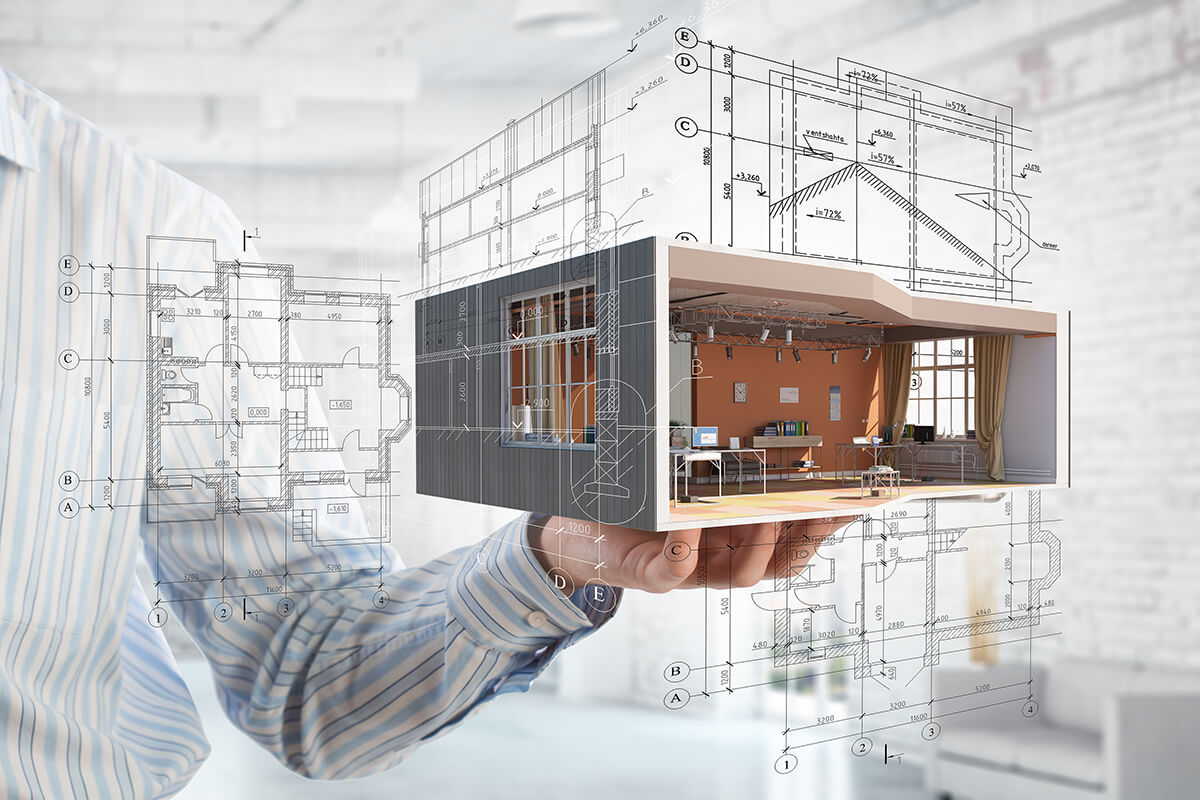Architect Collaboration Tips for Working with Contractors and Contractors
Architect Collaboration Tips for Working with Contractors and Contractors
Blog Article
Discover the Essential Abilities and High Qualities Every Architect Need To Have
As a designer, you recognize that success in your area surpasses just technological abilities. It has to do with blending imagination with usefulness, fostering cooperation, and managing jobs effectively. Each quality plays an important function in your capacity to develop areas that influence and work well. What are the specific skills that can truly establish you apart? Allow's discover the essential qualities every Architect ought to cultivate to grow in this ever-evolving career.
Creative Thinking and Innovation
Imagination and development are at the heart of style, driving the design of spaces that motivate and operate perfectly. As an engineer, you'll need to believe outside the box, pressing borders to develop special solutions for your customers. You'll frequently explore brand-new materials, strategies, and innovations to enhance your layouts. Accepting innovation suggests staying in advance of patterns while being versatile to transform.
You'll likewise attract motivation from numerous sources-- nature, art, and even day-to-day life can spark fresh concepts. This ability to blend imagination with usefulness enables you to address intricate problems, guaranteeing your layouts meet both visual and functional demands.
Strong Interaction Skills
While creating impressive spaces needs imagination, solid interaction skills are equally as important for architects. You require to convey your ideas plainly to customers, contractors, and staff member. Listening is equally as crucial; recognizing your customer's vision helps you create designs that really fulfill their needs.
You'll usually need to discuss intricate concepts in a way that's easy to understand, whether you exist a proposition or going over products. Efficient communication promotes collaboration, making certain everyone is on the same page throughout the project.
Structure connections is essential, as well. When you develop trust and connection, customers are more probable to share their worries and responses, causing much better outcomes.
Finally, don't underestimate the power of body movement and visual help. They can boost your message and make your discussions much more engaging. Solid communication skills not just elevate your styles however also strengthen your specialist relationships in the architectural world.
Technical Proficiency in Layout Software Program
As you navigate the ever-evolving globe of style, mastering design software application ends up being vital for translating your imaginative ideas right into concrete plans. Familiarizing on your own with programs like AutoCAD, Revit, and SketchUp will not just improve your style capabilities yet also enhance your workflow. These tools enable you to create in-depth illustrations, 3D models, and also simulations that can help you visualize and offer your principles much more properly.
Regularly upgrading your abilities and discovering brand-new functions can establish you apart from your peers, ensuring your styles are specific and innovative. Ultimately, technological proficiency in layout software application is a keystone of effective architecture, aiding you bring your visions to life.
Understanding of Design Principles

Understanding design principles likewise enables you to anticipate possible challenges early in the style procedure. You can make educated selections that improve your styles when you're aware of how different products behave under various conditions. Your designs need to not only be visually pleasing however lasting and also useful.
Additionally, a strong grasp of engineering concepts allows you to introduce within restrictions. You can push innovative borders while still adhering to security criteria. Inevitably, this understanding improves your architectural method and sets you apart in an affordable field.
Task Monitoring Abilities
Efficient project monitoring capacities are essential for designers, enabling you to oversee all elements of a project from perception to completion. You'll need to coordinate with numerous stakeholders, including clients, specialists, and designers, ensuring every person's on the same web page. Setting clear goals, timelines, and budget plans is basic; it aids you maintain the project on track and within range.
As a designer, you must likewise be proficient in jeopardy monitoring, identifying prospective problems prior to they rise. Strong interaction skills are necessary, enabling you to articulate your vision and encourage your team. click here You'll take advantage of being organized and detail-oriented, as this assists simplify processes and stay clear of costly hold-ups.
In addition, flexibility is key; jobs frequently develop, and being flexible allows you to respond effectively to adjustments. Eventually, your job management skills can considerably impact the success of your building undertakings, ensuring you deliver high quality results on schedule and within spending plan.
Focus to Detail
While managing tasks is important, your attention to information can make a significant distinction in the quality of your job. Every line you draw, every material you select, and every little spec you keep in mind adds to the overall success of a project. You require to be precise, ensuring that your styles not just meet visual standards yet additionally abide by constructing codes and regulations.
Missing even a tiny detail can bring about costly revisions or safety problems down the line. By cultivating a keen eye for detail, you enhance your capability to detect potential problems prior to they escalate. This caution not just conserves you time and sources however likewise develops your online reputation as a trustworthy Architect. Remember, it's typically the smallest details that elevate a project from great to extraordinary. So, embrace this skill, and allow it guide your style process, ensuring that your vision is performed perfectly.
Flexibility and Problem-Solving Abilities
As an engineer, you'll commonly encounter unforeseen changes in style and task demands. Your capacity to embrace these shifts and find ingenious services is essential for success. Staying versatile in your method not just enhances your analytical skills yet also maintains your jobs on course.
Welcoming Modification in Style
Embracing modification in layout is important for engineers, specifically when steering developing customer demands Architect and arising technologies. You require to grow versatility, as jobs usually shift direction based on brand-new insights or constraints. Being open to alter enables you to discover ingenious approaches and develop remedies that resonate with your customers.
When encountered with obstacles, your analytical abilities come into play. You'll typically require to rethink ideas and adjust intend on the fly, making sure that the last end result straightens with the customer's vision while fulfilling safety and security and governing standards. By being versatile and clever, you not only improve your designs but also build trust fund with your customers, verifying that you can navigate the intricacies of contemporary architecture successfully.
Cutting-edge Solutions to Difficulties

Adaptability in Task Management
While steering the complexities of job click here administration, adaptability comes to be a necessary asset for engineers. You'll usually face unexpected difficulties, from design adjustments to budget restraints, calling for quick thinking and versatility. Accepting modification allows you to pivot your approaches and discover innovative remedies, making sure project success.
Solid problem-solving abilities are essential; they enable you to analyze scenarios, consider options, and implement efficient options on the fly. When dealing with varied groups, being open to comments and different ideas cultivates collaboration and stimulates creativity.
Regularly Asked Questions
What Educational History Is Needed to End Up Being a Designer?
To end up being an architect, you'll require a minimum of a professional degree in style, usually a Bachelor's or Master's. Finishing a teaching fellowship and acquiring licensure via examinations is vital for your job development.
Exactly How Crucial Is Networking in the Design Area?
Networking's vital in architecture. It helps you construct relationships, find task possibilities, and gain insights from skilled experts. By linking with others, you improve your occupation leads and remain upgraded on industry patterns and advancements.
What Are the Usual Job Paths for Architects?
Usual job courses for designers consist of layout roles in companies, project monitoring, city planning, and specialized areas like sustainable design. Architect. You might also discover teaching or consulting, depending upon your rate of interests and experiences
Exactly How Can Engineers Stay Updated With Sector Trends?
To remain updated with market patterns, you should consistently participate in conferences, join expert associations, register for appropriate magazines, and engage with on the internet forums. Connecting with peers additionally aids you obtain understandings right into arising developments in architecture.
What Role Does Sustainability Play in Modern Style?
Sustainability forms modern design by emphasizing power efficiency, resource preservation, and eco-friendly products. You'll develop areas that lessen ecological effect, boost passenger wellness, and reply to environment obstacles, making your designs extra impactful and appropriate.
While making remarkable areas calls for creativity, strong interaction abilities are simply as important for architects. Strong communication abilities not only boost your styles however additionally strengthen your specialist relationships in the building world.
Effectiveness in style software lays the groundwork for a deeper understanding of design concepts, which is crucial for engineers.As an engineer, you'll usually face unexpected modifications in design and project needs.Accepting change in design is vital for engineers, specifically when steering advancing client requirements and arising innovations.
Report this page